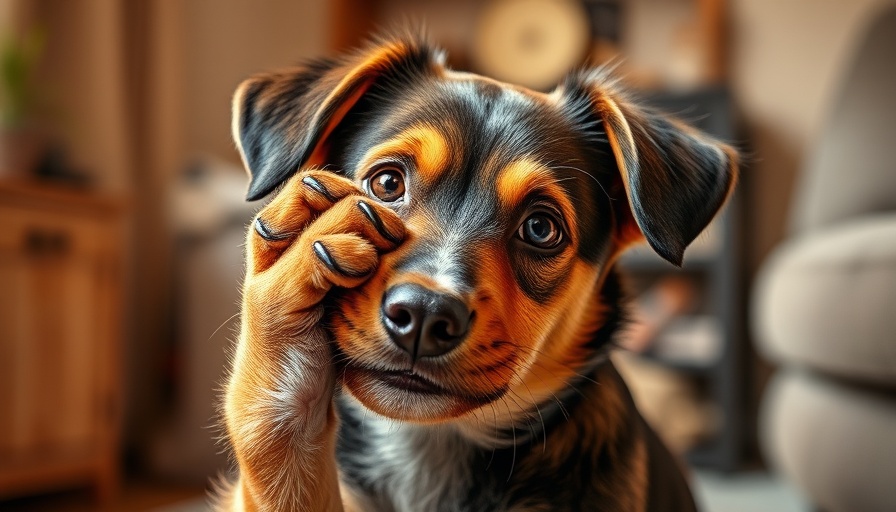
Understanding Dog Emotions: What's Behind Their Behavior?
As pet parents, we often marvel at the depth of emotions our dogs exhibit—it's evident that they're more than just playful companions. From joyous tail wags to the sorrowful gazes they occasionally share, our pups experience emotions that resonate on a human level. However, when it comes to the question, “Do dogs get embarrassed?” the answer isn't as straightforward as we might hope.
The Nuances of Emotional Expression in Dogs
Research indicates that dogs can express a range of feelings, including happiness, fear, and jealousy. But emotional experiences such as embarrassment are intertwined with social norms that dogs simply do not comprehend. For instance, when a dog pulls a shoe off the rack and drags it into the living room, their tail may be tucked not out of shame but simply because they know they're about to be caught!
Can We Identify When Dogs Feel Embarrassed?
While dogs may signal certain behaviors that pet parents interpret as embarrassment—like pinned ears, a bowing head, or avoiding eye contact—this may be more about their sensitivity to our reactions than a reflection of their own emotions. For example, if a dog finds itself in a situation where its owner appears displeased, it might exhibit these behaviors as a way of seeking comfort or reassurance. Instead of thinking of it as embarrassment, consider it as providing appeasement to their beloved human.
Why Dogs Might Behave as If They Are Embarrassed
Understanding why dogs show these behaviors requires us to look at their surroundings and interactions with humans. Dogs are astutely aware of their owners' body language and emotional states; consequently, they respond in ways that seek to communicate or alleviate tension. Just as humans might cringe after a social faux pas, dogs may reflect some form of anxiety or concern when they hope to defuse a situation.
Common Misconceptions About Dog Emotions
Let’s dive into some common misunderstandings regarding how dogs express their emotions. While we might relate our own experiences of regret or shame to their actions, these interpretations can lead us astray. For instance, if your dog accidentally chews up a favorite cushion, their sad eyes or guilty demeanor may appear like feelings of embarrassment. In reality, their distress might relate to an expectation of disapproval from their best friend—you!
The Importance of Understanding Canine Behavior
By disentangling our human emotional experiences from those of our dogs, we can foster a deeper and more meaningful bond with our furry companions. Recognizing that their behaviors often stem from instinctual responses rather than complex emotional layers allows us to approach training with compassion rather than confusion or judgement.
Building a Stronger Bond: Tips for Communicating with Your Dog
To nurture the bond you share with your dog and improve your communication, consider these helpful strategies:
- Observe body language: Pay attention to your dog's posture, ear position, and tail movements. Understanding these cues can help you respond better to their needs.
- Engage in positive reinforcement: Reward good behavior with treats or praise rather than scolding, leading to a more trusting relationship.
- Spend quality time together: Engage in activities they love like fetching, walking, or even puzzle games to build confidence and connection.
Conclusion: Embrace the Unique Nature of Your Dog
Through open dialogue with your dog, based on respect and understanding of their instinctual behaviors, you not only ensure their happiness but also enrich your companionship. Embrace your dog's unique personality and preferences, creating an environment filled with love, joy, and communication. After all, every wag of their tail and soft bark tells a story—a delightful language only dog lovers truly understand.
 Add Row
Add Row  Add
Add 


Write A Comment